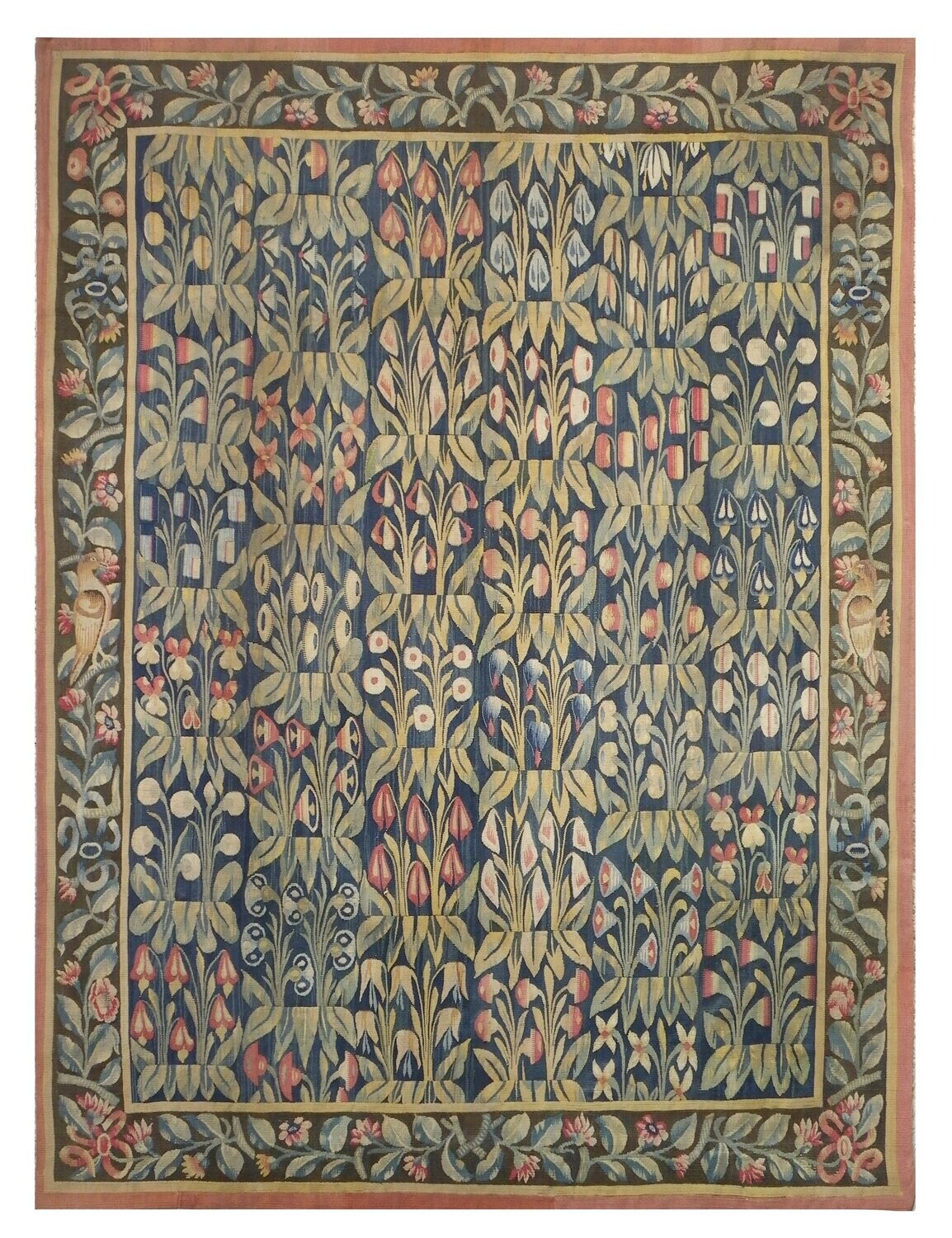Mille fleurs Tapestry - 19th century - Size:1.55Lx2.10H
€0.00
In stock
Product Details
Description
Reference No.: 78J/ D328
Origin: FRANCE-Aubusson
Period: XIX ème siècl
Provenance: Private Collection
Composition: Wool and silk
Dimension: 1.55 L x 2.10 H
Aubusson tapestry known as Mille-Fleures woven in wool and silk around the middle of the 19th century.
We speak of "tapestries with a thousand flowers", of "seedling tapestries" or more frequently at the time of "greenery". They were particularly fashionable in France and in the Burgundian Netherlands of the 15th and 16th centuries. They had the advantage of being available in all panel formats, which made this pattern very convenient, especially for bedroom sets. This practical aspect, as well as their conformity to the taste of the time, explains the frequency of greenery in the collections of the sixteenth century: they constituted 40% of the seven hundred tapestries of Philip II of Spain inventoried at his death in 1598.
The greenery could be used as a main motif, rather on small formats, or as a background motif, accompanying the central subject of the carpet. In the latter case, it is found both in narrative groups and on strictly decorative sets such as the armorial tapestries of Charles the Bold taken by the Swiss at the Battle of Murten and kept in Bern. Armorial groups against a backdrop of greenery are the most frequent and can still be found in the seventeenth century.
The style of the mille-fleurs has varied over time. The small floral tufts of the 15th century evolved into large branches during the Renaissance. It was seriously renewed by the order of the armorial carpets of Charles V at the workshop of Willem de Pannemaker in the 1540s and today dispersed between the Kunsthistorisches Museum in Vienna and the Rijksmuseum in Amsterdam.

Our house assures you the sale of a tapestry with invoice and approved expertise, well cleaned, in good condition with its fixing system. If necessary, we will inform you of the work that has been done. All our tapestries can be presented to you at your home in France and neighbouring countries before your final decision.
Save this product for later
Display prices in:
EUR



